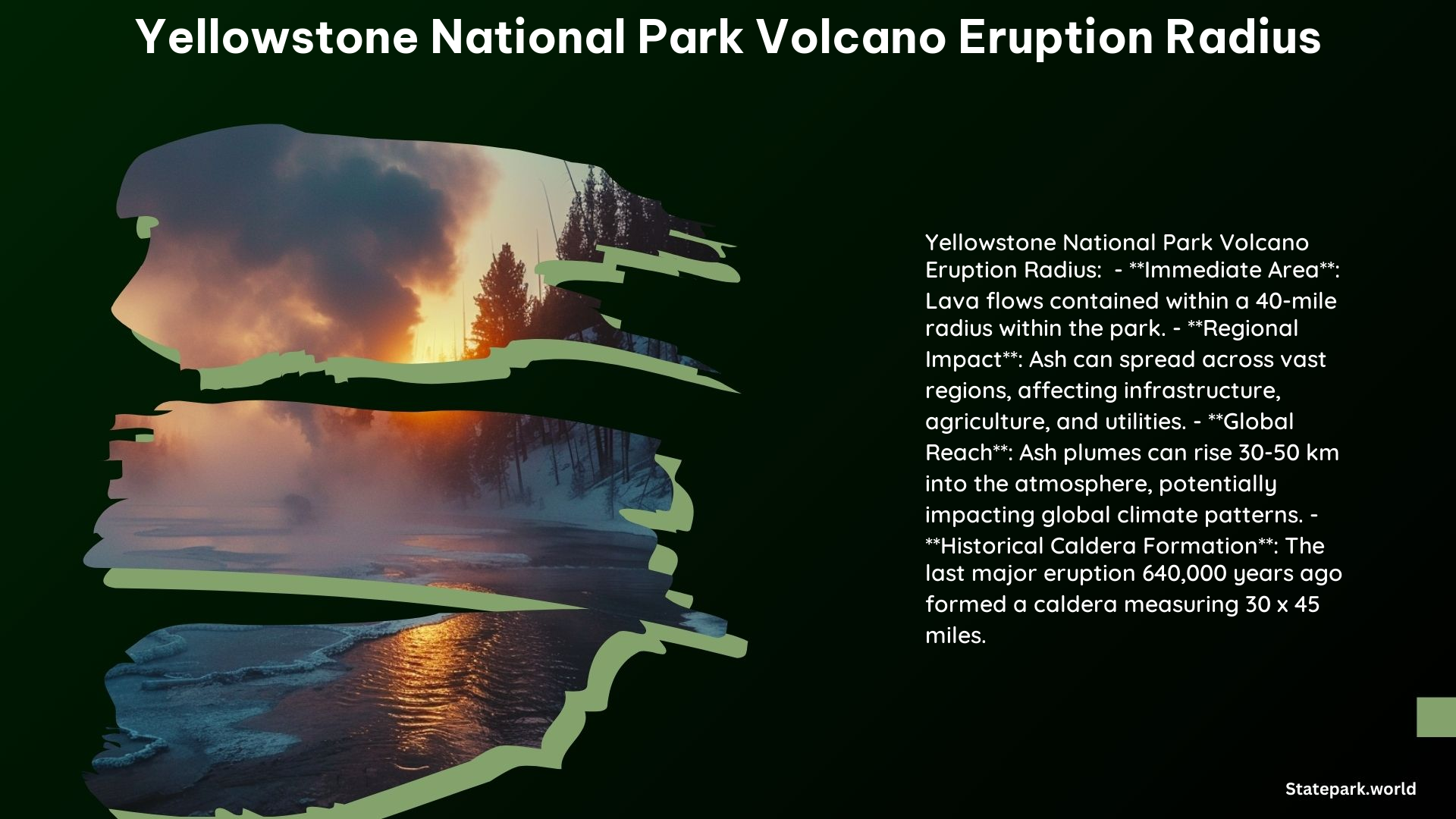The Yellowstone National Park volcano eruption radius is a critical factor to consider when discussing the potential impact of a supervolcano eruption. In this comprehensive blog post, we’ll explore the key details surrounding the lava flows, volcanic ash dispersion, historical eruptions, monitoring and prediction, and the global implications of such an event.
The Lava Flows: A Relatively Small Radius
The lava flows from a Yellowstone supervolcano eruption would be contained within a relatively small radius, approximately 40 miles or so within the park. While the lava itself would not travel far, the real threat lies in the dispersal of the volcanic ash.
Volcanic Ash: Widespread Devastation

The plumes from a Yellowstone supervolcano eruption can rise 30 to 50 km into the atmosphere, three to five times as high as most jets fly. This ash could smother vast regions, disrupt transportation, and cripple essential services. The ash could spread across vast regions of the United States, causing severe damage to infrastructure, agriculture, and utilities.
| Ash Dispersion Radius | Potential Impact |
|---|---|
| 100 miles | Significant damage to buildings, infrastructure, and agriculture |
| 500 miles | Widespread disruption to transportation, communications, and power grids |
| 1,000 miles | Potential global climate effects, including cooling temperatures and changes in precipitation patterns |
Historical Eruptions: Magnitude 8 and Beyond
The Yellowstone supervolcano has experienced only three immensely massive eruptions, the most recent one dating back 664,000 years. These super-eruptions, categorized as magnitude 8 or higher on the Volcano Explosivity Index, involve the ejection of vast amounts of material, capable of burying extensive areas under layers of ash.
Monitoring and Prediction: Challenges and Uncertainties
The scientific community closely monitors the supervolcano’s activity, but predicting the exact timing of an eruption is not possible. Volcanoes like Yellowstone typically give weeks to months of warning prior to their initial eruption, allowing for some preparation and response planning.
Global Impact: Far-Reaching Consequences
A Yellowstone supervolcano eruption would not only impact the immediate vicinity but also have far-reaching implications for global climate patterns. The release of vast amounts of ash and gases into the atmosphere could lead to significant cooling of the planet, disrupting agricultural production and causing widespread social and economic upheaval.
In conclusion, the Yellowstone National Park volcano eruption radius is a critical factor to consider when discussing the potential impact of a supervolcano eruption. While the lava flows would be relatively contained, the dispersal of volcanic ash could have devastating consequences across vast regions of the United States and beyond. The scientific community continues to monitor the supervolcano’s activity, but predicting the exact timing of an eruption remains a significant challenge.
References:
– Yellowstone Supervolcano Revealed
– How Far Would Ash Travel if Yellowstone Had a Large Explosive Eruption?
– Yellowstone Overdue for Eruption? When Will Yellowstone Erupt?
– Yellowstone Supervolcano: What Would Happen if It Erupted?
